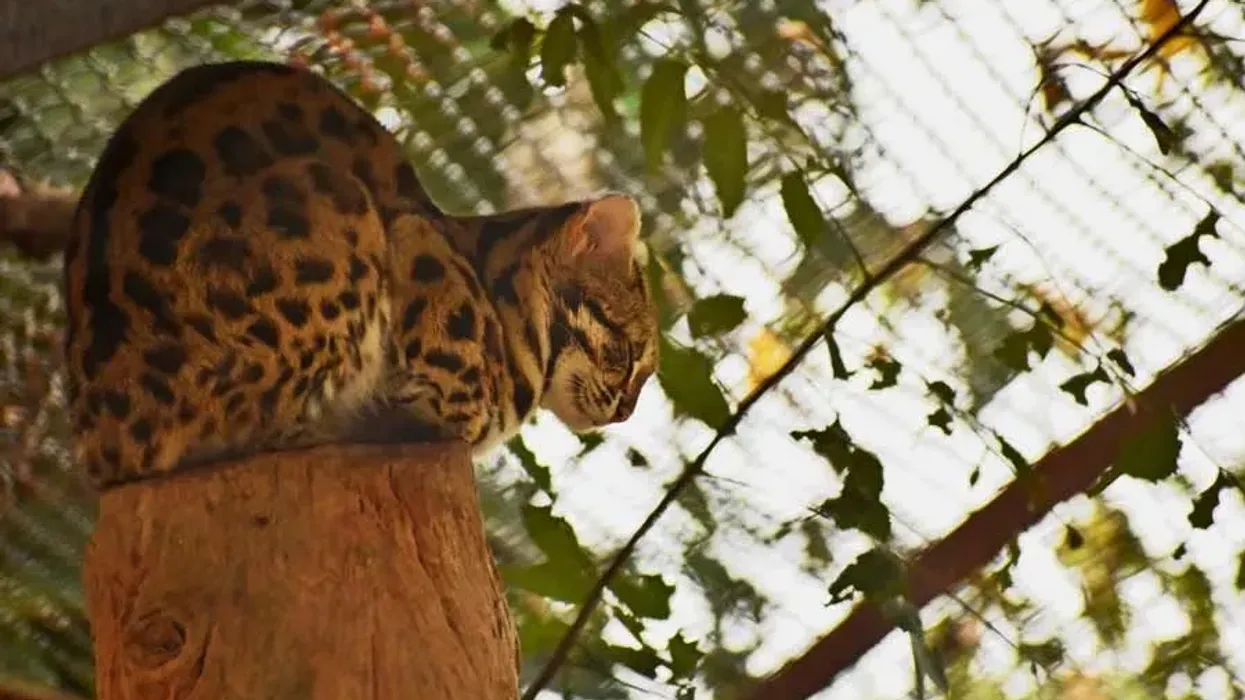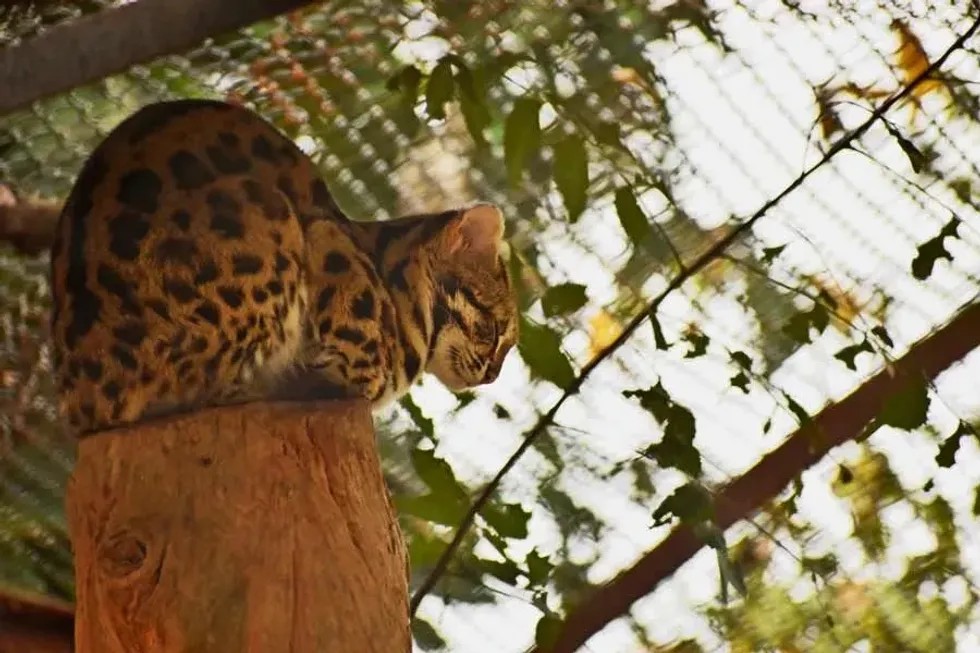Are you in love with cats? Keep on reading to know about a fascinating wild cat native to South and Southeast Asia.
The Leopard cat looks similar to a domestic cat, and its picture may give you the impression of being someone's pet. The species is smaller in size compared to the other wild cats, and they have a carnivorous diet like other felines.
The leopard cat prefers a forested habitat, but they have also been known for living near the human habitat. One of the most striking things about leopard cats is their spotting which looks like that of a leopard.
The color of their fur covering may change depending on their native area. Leopard cats have fur colors ranging from yellowish-brown to silver-gray.
In cold areas, these cats may have a thicker coat to save themselves from the harsh weather. Leopard cats love to feed on rodents, especially mice and rats.
They have a powerful way of catching on to their prey before killing them. Their beautiful fur has led to their poaching in several countries.
Their fur is turned into showpieces or garments because of its leopard-like look. However, their population is still persevering in the wild and is currently considered of Least Concern according to the International Union for Conservation of Nature (IUCN) Red List.
Read more about animals like Balinese cats and Egyptian Maus.
Leopard Cat Interesting Facts
What type of animal is a Leopard Cat?
A Leopard cat is a wild cat native to different parts of Asia.
What class of animal does a Leopard Cat belong to?
The leopard cat belongs to the class 'Mammalia' and falls under the 'Felidae' family.
How many Leopard Cats are there in the world?
Though there are no strict surveys for knowing the number of individuals present in the species, it is still assumed that over 50,000 leopard cats or Prionailurus bengalensis are present in the wild.
Where does a Leopard Cat live?
The different forms of habitats populated by the leopard cats include shrubland, coniferous forest, grassland, tropical forest, the temperate forests of South, Southeast, and East Asia. They can also live in human households as many individuals have been traded as exotic pets.
What is a Leopard Cat's habitat?
Leopard cats like to live in forests that are close to a water source. They even have the ability to swim, though they seldom participate in the activity.
Apart from the mainland, leopard cats have also been known to inhabit several islands. These felines are also found in the foothills of the Himalayas at an altitude of 3,300 ft (1,000 m).
In China, the leopard cat is also found near farmlands. Recently, some leopard cats were even spotted in the Kanchenjunga Conservation Area, which is at an altitude of 14,678 ft (4,474 m). Leopard cats tend to avoid areas that have heavy rainfall.
In Japan, the leopard cats mainly dwell on the islands of Iriomote and Tsushima. As an exotic pet, some leopard cats are also found in human households.
Who does the Leopard Cat live with?
Like most felines, leopard cats are solitary animals who only like to interact with their peers during the mating season. The Leopard cat uses scent marks to settle their territories.
How long does a Leopard Cat live?
10 - 13 years is the average life range of a Leopard cat. Some have even reached the age of 16 or 17 years, but that is extremely rare.
How do they reproduce?
Leopard cats have estrus (heat) cycles lasting for five to nine days. Male leopard cats usually attract females with the help of scent marks.
In tropical areas, there is no specific breeding season for the leopard cat. However, in colder areas, kittens are usually born during the spring months after the breeding is over.
The gestation period for them lasts 60–70 days. On average, the female Leopard cats give birth to two to three kittens. The kittens are ready to eat meat by the time they are four weeks old.
In captivity, female leopard cats may reach maturity at just one year of age, but in the wild, they may reach sexual maturity as late as 18 months. During the gestation period and even after that, the male Asian leopard cats stay with the females to rear the kittens.
What is their conservation status?
According to the International Union for Conservation of Nature (IUCN) Red List, the Leopard cat currently falls under the classification of Least Concern.
Leopard Cat Fun Facts
What do Leopard Cats look like?

The leopard cat or Prionailurus bengalensis looks very similar to that of domestic cats. Their size is equal to a domestic cat. These small wild cat species have a small head with a narrow white muzzle.
However, as wild cats, the leopard cat has a very slender body with long legs. You may also notice that they have more enhanced webbing on their paws compared to domestic cats.
The leopard cat is mainly known for its distinct leopard-like black spotting, which is bunched together like rosettes. However, the markings can also be scattered throughout its body. The color of their fur can change according to their habitat.
Leopard cats belonging to South Asian regions have a more yellowish-brown fur covering, whereas those belonging from the North have a silver or gray appearance. This variation might also be due to the weather.
All leopard cats generally have a pale underbelly. Leopard cats also have a beautiful and thick tail which is almost half the size of their body. The tail has spots and black rings at its tip.
How cute are they?
Like any other felines, the leopard cat is extremely cute. They look similar to a domestic cat with a more slender body. This has led to the cat species being a favorite of the exotic pet market.
How do they communicate?
Leopard cats have enhanced sensory perceptions, which helps them to understand their surroundings. Like other cats, the species also communicates with the help of scents, especially during the breeding season. However, vocalization is their main form of communication which includes mewing, purring, and cries which are similar to those of a domestic cat.
How big is a Leopard Cat?
The average length of a Leopard cat varies between 15 in - 26 in (39 cm - 66 cm). The species has an average shoulder length of 41 cm or 16 in.
Their long tail can measure anywhere between 6.8 in –12.2 in (7.2 cm – 31 cm). The Asian leopard cat found in the Russian far east tends to be bigger because of the colder climate.
The animals may even grow a bigger coat to fluff themselves during the harsh winters.
In comparison with the Leopard that grows to an average size of 35 in - 63 in (90 – 160 cm), the small wild leopard cats or are about four times smaller. The Asian leopard cat belonging to the Philippines is said to be the smallest.
How fast can a Leopard Cat run?
The average speed of a Leopard cat is about 45 mph or 72 kph.
How much does a Leopard Cat weigh?
The Asian leopard cat has an average weight of 1.2 lb to 16 lb (0.55 kg - 3.8 kg). However, the cats hailing from Russia might grow bigger and larger.
What are their male and female names of the species?
There are no specific names for the males and females of the leopard cat (Prionailurus bengalensis) species. However, in the world of domesticated feline population, the male cats are usually regarded as 'tomcats' and the females are regarded as 'queens'.
What would you call a baby Leopard Cat?
A baby leopard cat is known as a 'kitten'.
What do they eat?
Leopard cats are carnivorous in nature. These nocturnal animals enjoy hunting at night, and they have a taste for amphibians, small mammals, birds, and even insects. But one of their favorite foods is rodents. Just like your average house cat, the Asian leopard cat is crazy for rats and mice.
At times, they may even eat eggs or aquatic animals. They are active hunters and like to pounce on their prey and hold them with their claws. It makes the species distinct from other small cats.
Are they slobbery?
No, Leopard cats aren't slobbery in nature.
Would they make a good pet?
Would you want a wild animal in your home? The matter of leopard cats being a good pet is totally subjective.
If someone is able to give these animals a suitable habitat, then they might become a good pet. However, that is next to impossible as these species are used to living in the forest. Their population spans over Asia.
Leopard cats have been in the exotic pet market for a while. If you really want to get and feel like being near a wild cat, then the closest thing for you is to get a Bengal cat.
Bengal cats have been bred by mixing leopard cats with domesticated cats, and it gave rise to a new species. This new cat population is able to live in the human habitat without complaint. Nevertheless, you need to be very careful about keeping these cats.
Make sure to check the local laws and regulations before bringing one to your home. In most cases, owning a leopard cat isn't legal as wild felines may get aggressive or have their preying instincts.
Did you know...
One of the interesting Asian Leopard cat facts is that the species is divided into more than 11 subspecies. These cats are found all over South Asia, Southeast Asia, and East Asia. Most of them look quite similar with some differences found in the color of fur and spotting patterns.
It is regarded that the fishing cat and the flat-headed cat are descendants of the leopard cat.
How many Leopard Cats are left?
If we have a look at the International Union for Conservation of Nature (IUCN) Red List, then the animals are of Least Concern. More than 50,000 of them roam in the wild.
However, the species are still caught for their fur, and a lot of the population is under threat.
One of the harshest facts is that they are being constantly hunted in Japan, and they are one of the foremost countries to participate in the fur trade. Even though their population is protected in Myanmar, the animals are still being killed.
Can people keep Leopard Cats?
It might be illegal to keep leopard cat pets at your home without learning about the legal consequences. As they are wild animals that live in a habitat that is forested, so it is better to leave them there.
However, if you happen to have a leopard cat, it is better to talk with the pet officials. Leopard cats have gone through breeding with domesticated cats to produce Bengal cats.
The kittens have a similar leopard-like look to their wild parents and have a slender body. As they aren't fully bred of wild animals, the species can be considered as a domestic breed.
Nevertheless, it is important to regard the area laws before adopting an animal with wild parents. It is legal to keep a Bengal cat in the UK, but the owner might need to get a special license.
Here at Kidadl, we have carefully created lots of interesting family-friendly animal facts for everyone to discover! Learn more about some other mammals including servals and ocelots.
You can even occupy yourself at home by drawing one on our leopard cat coloring pages.








